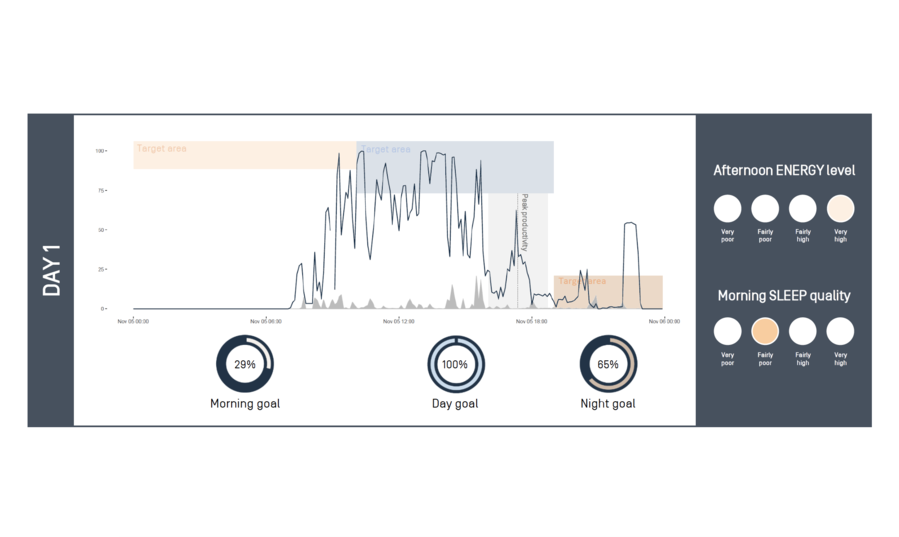
Last week our complex and equal part exciting automation system finally (currently in Beta phase) digested the information collected through the unique corporate LYS Light Diet programme and produced beautifully insightful overviews of exactly how the light we are exposed to affects our day-to-day energy levels and sleep quality. At the start of each Light Diet, we ask our users to input six answers to basic questions such as, “how energised do you feel in the first half an hour of after you wake up”, and “at approximately what time of the day do you feel at your most energised?”. These may seem like obscure questions, but using circadian rhythm research, the LYS database is able to determine, with the help of these answers, exactly when during a user’s 24-hour cycle is their ‘peak productivity time’.
From participating in the Light Diet programme for seven days we were able to draw out insights into how light affects each user, create an overview and generate personalised actionable feedback that is unique to each user. The results are beautiful and insightful at the same time. Looking at one user’s results as an example, it is clear to see the day-to-day patterns of this individual’s activity. On a positive note, this user was incredibly successful in reaching the Day Goal by habitually moving around at approximately 10:30am — perhaps this could be the result of a coffee break at work or a daily outside activity. Another interesting observation we could draw from this user’s’ results of the Light Diet is that a quick exposure to high-intensity light was present in the user’s environment every evening at approximately 11pm, which could be fluorescent lights in the bathroom or screen time just before going to sleep. Equally, in the morning, our example user was consistently missing their Morning Goal, which we have observed directly correlates to the reported low energy levels in the afternoon.
One of the most exciting and unique aspects of the LYS Light Diet is that by combining circadian rhythm research with the information gathered throughout the programme time frame, we are able to not only show users what they are doing right and where they are missing their goals but also exactly where it is that they should improve their light habits in order to reach optimum peak performance in their personalised productivity time.
Taking our example user again, we were able to determine that this person’s peak performance time is between 11am and 3:00pm, according to a variety of factors, such as age, gender, perceived energy levels and sleep quality. With that time frame in mind, after taking the Light Diet, we were able to give personalised feedback to the user on when exactly in their 24-hour cycle they are not getting the critically correct type of light to nurture this peak performance time frame.
By looking at the Light Diet results on the report we can see that the impact of light intake on our energy levels is not so much a matter of ‘if’ but of ‘to what extent’. Most interestingly, however, is that these major impacts on our wellbeing have the potential to be worked around with simple behaviour change. If there are insights, there will be a raised awareness — and hopefully — positive impact on sleep quality and boosted energy levels throughout the day.
The LYS Light Diet is currently only available for corporate use within businesses. If you are an employee, speak to your employer about incorporating the programme within your work to see how it can boost productivity and increase sleep quality. And if you are an employer, contact LYS Technologies to hear more on how we can help your employees tackle sleep disruption and its effects.